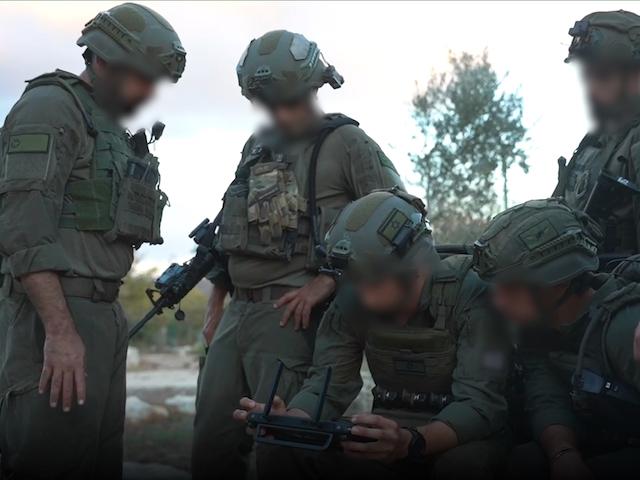According to the Israel Defense Forces (IDF) Spokesperson, the 146th 'Hempetz' Division launched a highly strategic and targeted ground operation in southern Lebanon under the cover of night on Sunday. This marks a major escalation in Israel’s ongoing efforts to dismantle Hezbollah’s terror network, following nearly a year of intense defensive maneuvers along Israel’s northwestern border. The division, a significant element of Israel’s reserve forces, is now tasked with rooting out terrorist infrastructures that threaten Israel's northern communities and broader regional stability.
In a bold move, the 146th division, which includes the elite Carmeli Brigade (2) and the formidable Iron Fist Brigade (205), began its mission in the western sector of southern Lebanon, a notoriously hostile region. This is the first time since the inception of Operation Northern Arrows that a reservist division has been deployed to the frontlines of Lebanon. After a year of defensive operations along the northern front, the division’s shift to offensive ground action represents a new phase in the IDF’s strategic objective of neutralizing Hezbollah’s military capabilities.
IDF TO EXPAND OPERATIONS BY ADDING ANOTHER DIVISION.
— Conflict Monitor (@ConflictMoniter) October 8, 2024
The IDF has announced the 146th Reserve Division of the Northern Command, will be deploying in the western sector of southern Lebanon
Under the command of the division are two brigades - the Carmeli Brigade and the 205th… pic.twitter.com/3FA0l09sVc
For much of the past year, the 'Hempetz' Division served as a regional defense unit, with its forces playing a vital role not just in the north, but also across other theaters of conflict, including Gaza and the Judea and Samaria regions. Its troops have now transitioned from defense to offense, pushing into the perilous terrain of southern Lebanon, where Hezbollah's forces have entrenched themselves deeply within local infrastructure, making them a more difficult target.
Accompanying the 146th Division in this operation are artillery forces from the elite Resurrection Formation (213), which are laying down precise and overwhelming firepower, aiding the ground troops in their mission to uncover and obliterate terrorist networks. These operations are critical, given Hezbollah's years-long investment in constructing elaborate networks of bunkers, tunnels, and weapons caches designed to withstand air strikes and launch deadly cross-border assaults on Israeli civilians.
The situation escalated further as Israeli forces intensified their air campaign across Lebanon. Overnight strikes in the southern suburbs of Beirut targeted high-value terrorist operatives, resulting in the elimination of senior Hezbollah commander Suhail Hussein Husseini. If confirmed, Husseini’s death would represent yet another devastating blow to Hezbollah’s leadership, following a series of Israeli assassinations of top Hezbollah and Hamas commanders in recent months.
IDF spokesman:
— Omadi (@iamtenseven) October 8, 2024
The "Explosion" division (146) began last night (B) a focused and delimited ground activity in southern Lebanon
Last night (Monday), the forces of the "Hempetz" division (146) including the "Carmeli" brigade (2) and the "Iron Fist" brigade (205) began a focused… pic.twitter.com/oGZxaqHlS9
This latest ground push comes on the heels of nine days of military operations focused on the eastern side of the Lebanese-Israeli border, an area that saw fierce fighting following Israel’s invasion on September 30. While Israel’s primary mission remains the eradication of Hezbollah’s military capabilities, the conflict has already led to the displacement of over 1.2 million people across Lebanon, creating a growing humanitarian crisis in the region.
As the battle rages on, Israel remains resolute in its commitment to defending its citizens. The assault against Hezbollah is a critical element of that broader strategy, which also involves ongoing air and ground operations against Hamas in Gaza. Over the last month, more than 2,080 people have been reported killed in Lebanon due to Israeli strikes, with an additional 9,869 wounded. Hezbollah’s deeply entrenched presence in southern Lebanon has made the region a hotbed of instability, and the IDF’s current mission seeks to dismantle this threat once and for all.
The airstrikes come as Israel commemorates the horrific October 7 attacks by Hamas, during which 1,205 Israeli citizens were brutally murdered and 251 kidnapped. Despite the horror of those attacks, the IDF has vowed that Hezbollah and Hamas will not be allowed to terrorize Israeli civilians with impunity.
#IDF 's 146th Division initiated operations with its Carmeli Reserve Infantry Brigade and Iron Fist Reserve Armored Brigade, supported by the 213th Artillery Regiment. The goal of these operations is to secure the area, allowing northern Israeli residents to safely return home.
— Israel Voice Abroad -IVA (@lVoiceAbroad) October 8, 2024
On the Gaza front, Israel’s air and ground assaults continue unabated, with Hamas reporting 42,000 Palestinian casualties since the start of the conflict. However, experts widely question the casualty figures reported by the Hamas-run Gaza Ministry of Health, given the organization's well-documented history of inflating numbers for propaganda purposes. Independent military analysts, including Colonel John Spencer of West Point’s Urban Warfare Studies department, have noted that Israel’s operation in Gaza, despite being one of the most complex urban warfare environments in modern history, has been executed with unprecedented precision.
While the civilian-to-combatant casualty ratio in urban conflicts is typically as high as 9:1, Israel has managed to reduce that figure to 2:1—a testament to the IDF’s stringent efforts to minimize collateral damage even as Hamas embeds itself within civilian areas.
John Spencer, chairman of urban warfare studies at West Point says that “Israel is setting the ‘gold standard for avoiding civilian casualties.” According to British Col. Richard Kemp, “the average combatant-to-civillian death ratio in Gaza is about 1 to 1.5.” According to the… https://t.co/utrsjqa2J4
— SAFE CAMPUS (@_SAFECAMPUS) March 18, 2024
This delicate balance between ensuring Israeli security and minimizing civilian casualties underscores the complexity of Israel's military operations in both Gaza and Lebanon. The mission against Hezbollah, like that in Gaza, is a critical piece of Israel’s broader strategy to ensure peace and security for its citizens while navigating the treacherous terrain of international conflict.


